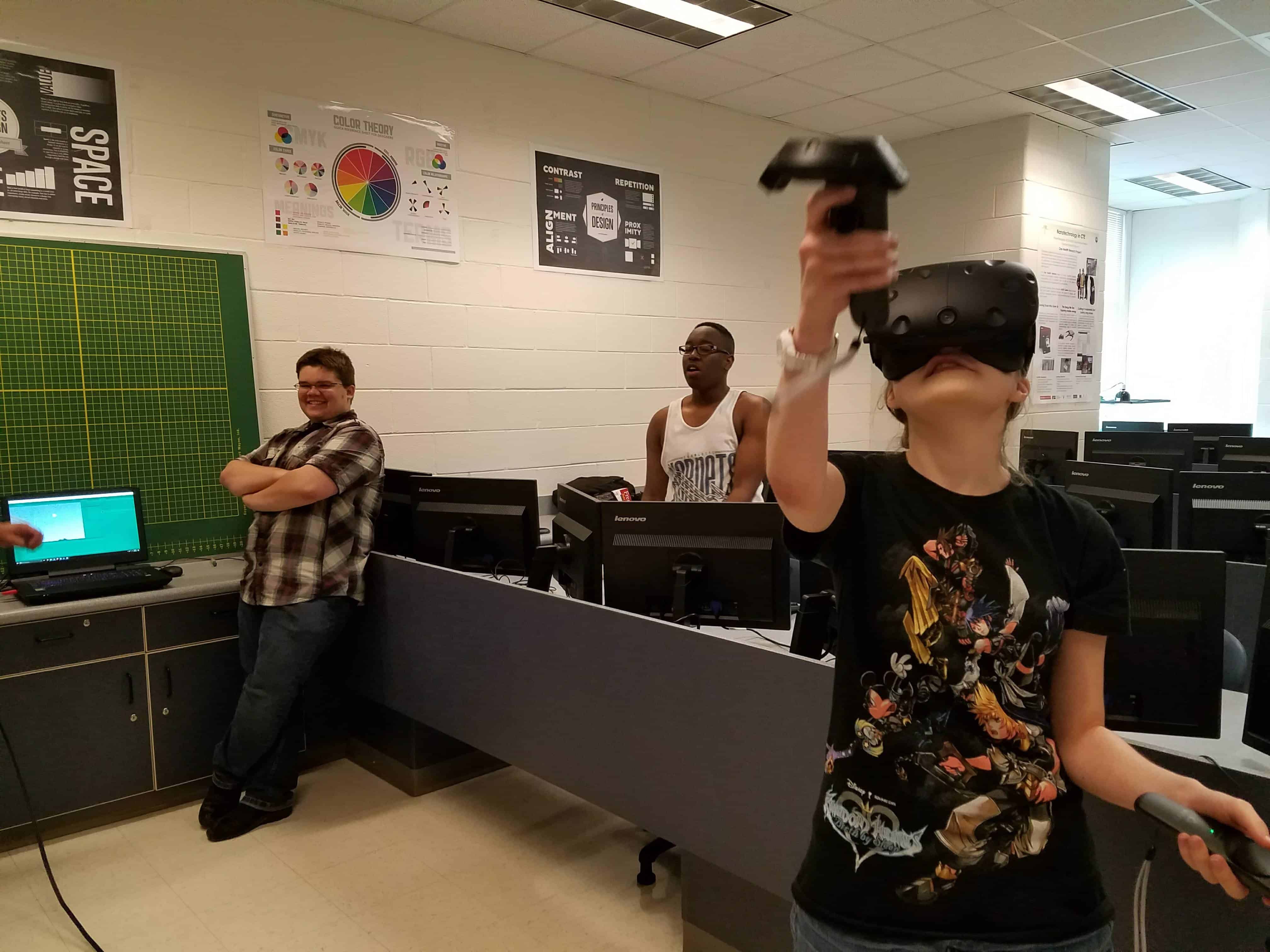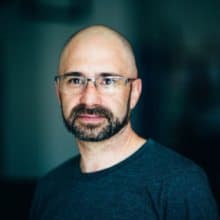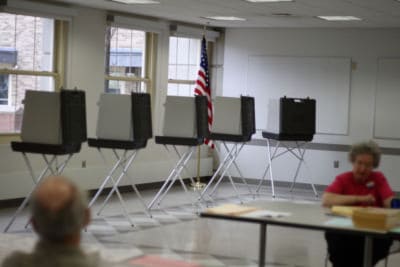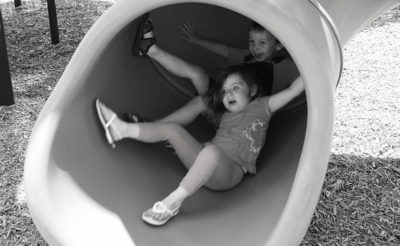In my classroom, I am always looking for ways to provide students with a more genuine learning experience. This school year, that goal has been achieved with the help of three local organizations: Duke University, Growing Change, and Lucid Dream.
Eight seniors from my Game Art & Design (GAD) concentration at the Durham School of the Arts are taking part in a community service-based project for real-world clients who are working to convert an abandoned prison in Scotland County into usable community space.
Our project, Flipping Prisons to Help Rebuild Communities, was funded by a $52,000 grant from the State Farm Youth Advisory Board (YAB). The YAB received more than 750 applications for grants from across the country and accepted only 63. Our proposal, written by David Stein of Duke University, is one of only three such funded projects in North Carolina.
The project is the brainchild of Noran Sanford, founder of Growing Change, a nonprofit organization that works with boys who have gone through the juvenile justice system. Sanford’s goal is to inspire his youth to turn their lives around by reclaiming and transforming the abandoned Scotland County prison. They plan to use the property for a number of community outreach projects including sustainable agriculture that incorporates aquaponics and composting to help feed families in need. They also want to produce biofuel, and build a climbing wall/repelling station for recreation, as well as develop a learning center to assist at-risk youth and military veterans.
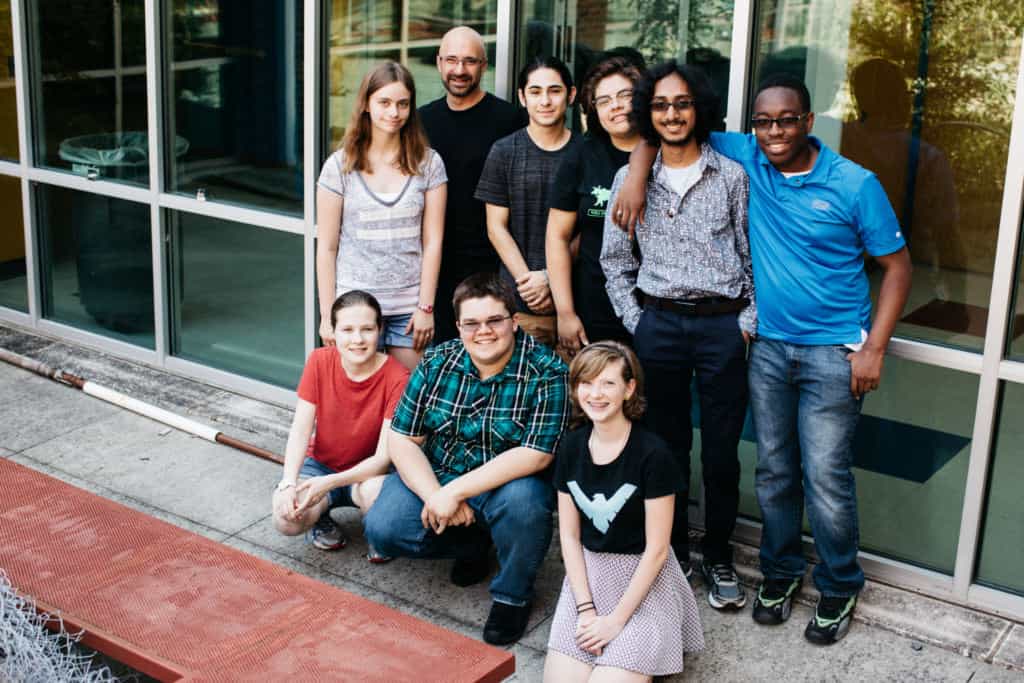

This is where my students come into the project. Over the four years that students are in our Game Art & Design concentration at Durham School of the Arts, they learn how to use a number of tools employed by professional game designers. When most people hear that my students learn the same skills that are used to create video games, images of kids playing all day are typically conjured up.
However, the same skillset can also be applied to a number of other industries and can provide powerful interactive experiences. My students become skilled at using applications such as the Adobe Creative Suite, which includes Photoshop, Illustrator, Premiere, and Audition to manipulate 2D graphics, as well as create and edit audio/video files. They learn the basics of digital 3D modeling with tools such as Autodesk 3ds Max and have created both 2D and 3D video games using the GameMaker and Unity game engines.
While they understand how to create interactive experiences for entertainment, the current project allows these advanced students to use their knowledge and talents to perform a public service. Mr. Stein of Duke University understands the power of having these skills as well as the experiences one can create with them. With this knowledge, he approached me about having my students create a virtual reality (VR) walk-through of the prison in both its current state and showing Growing Change’s vision for what it can become. This VR product will allow Growing Change to court funders for donations allowing them to turn their vision into a reality.
To complete the project, the students have been working as a production team. Each member has specific responsibilities based on their personal interests and strongest skills. Three of them are creating the 3D models, two are working on programming the scenes while one student creates the sound effects and soundtrack. Another student is handling the logistics and communications between the class and the team members who are outside of our school.
To succeed, students need to use a multidisciplinary approach to creative design, which more directly models the manner in which most employees approach their job responsibilities as opposed to how we typically expect students to focus on lessons in school. To meet their production deadline, they have to draw from skills gained in a variety of other classes and put them to use while working on their own individual components.
The students used math skills to measure the entire prison site and then convert those measurements to something more appropriate for use in 3D modeling. They use language arts skills for individual and group reflections as well as public communication of their work. They also bring knowledge of research and critical thinking skills commonly encouraged in history and science classes while researching the history of this specific prison and examining how prisoners have been used to build our state’s infrastructure. On top of everything else, they have to demonstrate a solid understanding and use of both traditional and digital artistic skills.
Then comes learning new hardware and software tools/techniques. In order to create a usable product, my students needed to understand state-of-the-art technologies in the form of the HTC Vive and Samsung Gear VR systems as well as how to use and manipulate video with a 360 degree camera. Unfortunately, I came into this project with the same skill level and knowledge of these technologies as the students. So, unlike most classroom lessons, my students must rely on their own abilities and each other to learn how these devices operate as there is no single, definitive source to provide instruction.
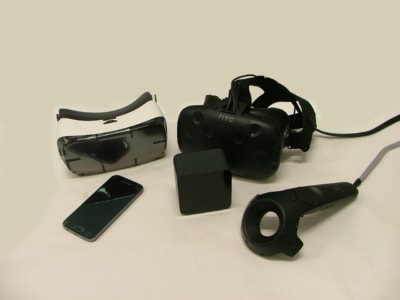

Once the VR devices themselves were understood, they had to figure out how to access them using the game engine in order to bring together the overall interactive experience. To help with this, we were connected with Lucid Dream, a small company housed in the American Underground in downtown Durham. Employees from Lucid Dream visit my classroom to help with any issues we experience each Tuesday during our regular class time.
Overall, I would say this is the sort of project that most teachers can only dream about having their students take part in. It requires using multidisciplinary techniques and intense critical thinking skills throughout the process in order to succeed. It also involves community partnerships and helps to better our society, even if only on a local or small scale. On top of everything else, these students are taking part in progressing an innovative program as there is no other organization in the nation attempting to make use of abandoned prison sites in this manner.
Currently, the students have visited the site twice, once for initial planning last school year and again during a teacher workday, volunteering their personal time to help this project succeed. They are also assigned to a daily 50-minute class to work on their project. So far, this means they have put a solid 75 hours into the project but can expect to spend 200+ hours working towards completion. Hopefully, the project will culminate with the students presenting their work at the East Coast Game Conference later this spring where they will share their work with professionals in the game industry.
So you might wonder why I find this to be such a valuable experience for my students. As a Career & Technical Education teacher, the focus in many of the classes I teach revolve around students acquiring skillsets that translate to on-the-job applications. Although students need to demonstrate knowledge of the hard skills needed to complete this project, the larger emphasis is on the soft skills that so many students lack or fail to grasp the importance of these days. Skills like teamwork, perseverance, resourcefulness, and resilience that so many employers are seeking in new hires.
And, the students are getting it as evidenced by how they respond when asked what participating in this project means to them. For instance, according to Katlyn Pendergraph, the VR Prison Flip project is “real life experience. It’s getting me ready for the real world.” And again by Nicholas Martelon, who says the project means he can “get real-world experience that I can take to college and work.”
If you would like to learn more about our project or follow the students’ progress throughout the year, you can read about their experience on the project website.
